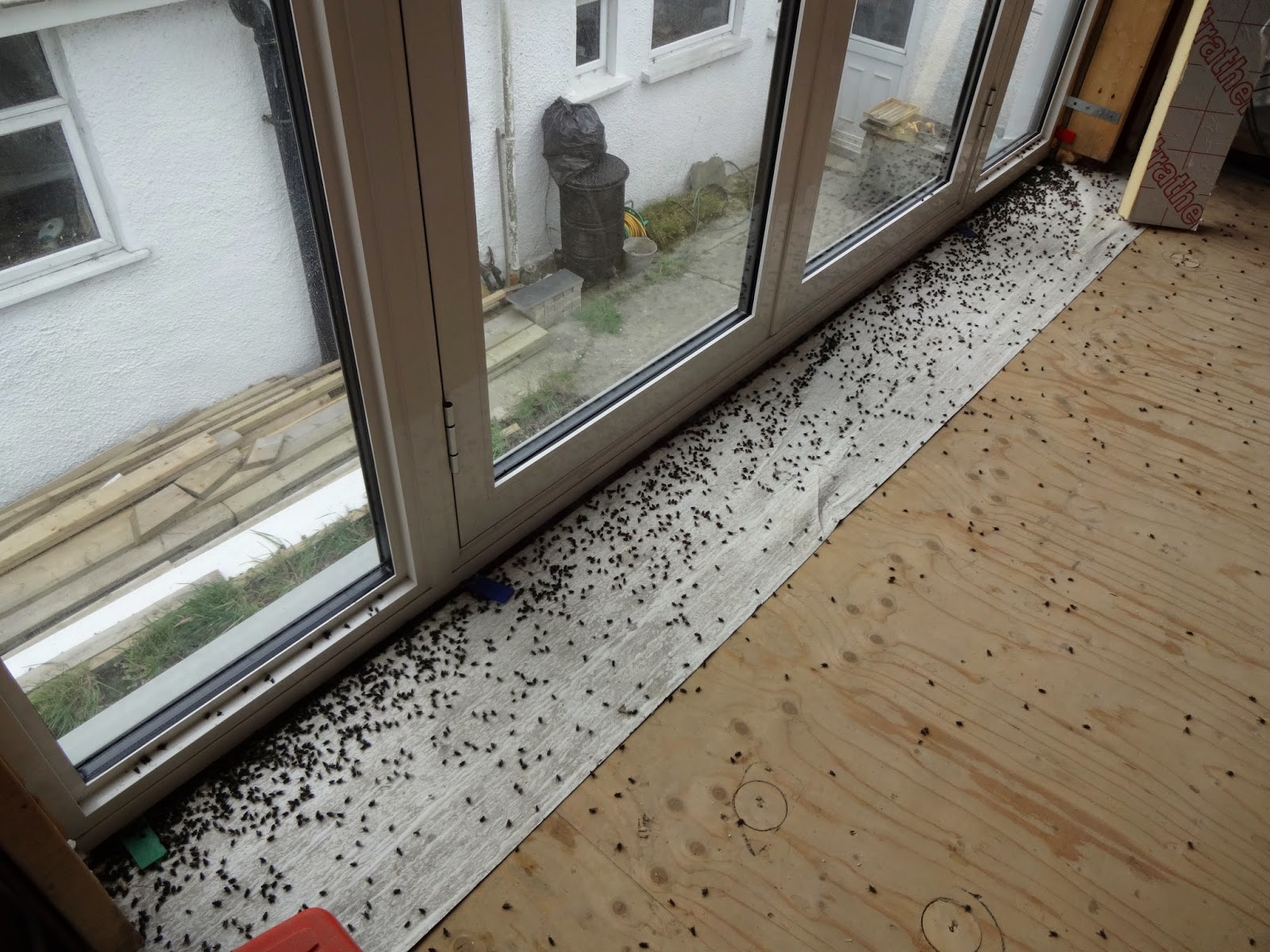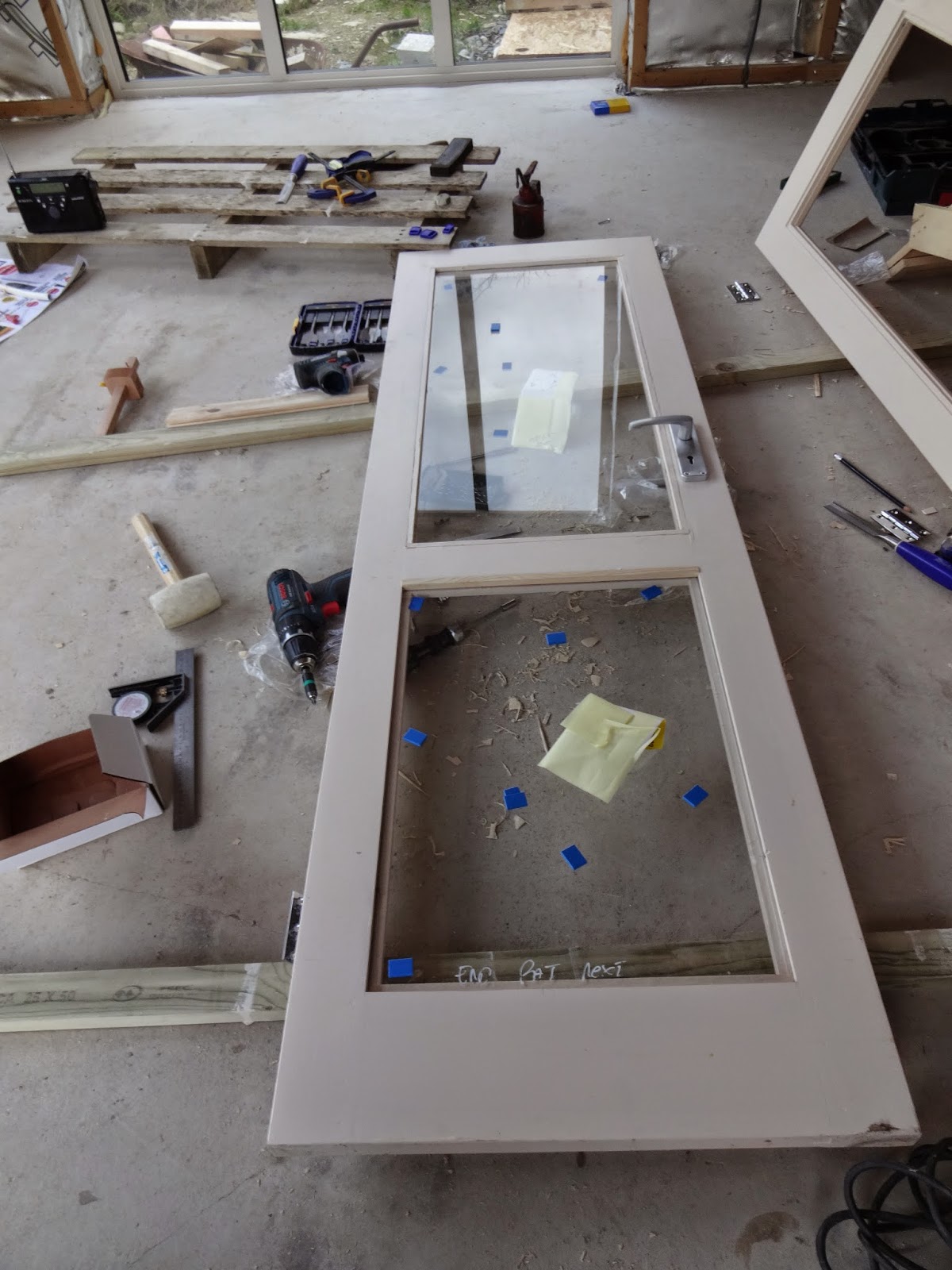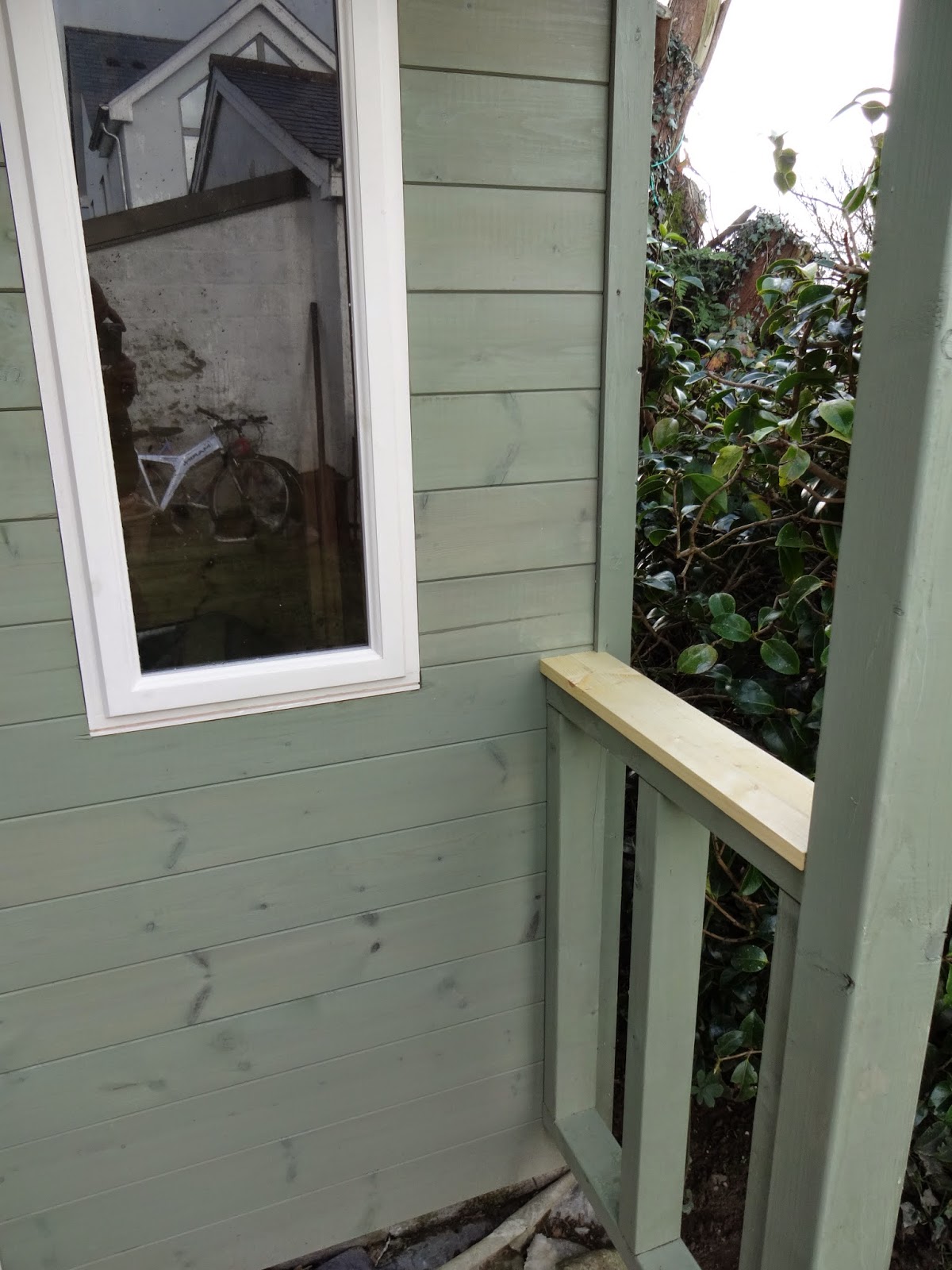The warm autumn weather brought with it an unexpected and distinctly unwelcome arrival - cluster flies! As their name suggests, these little gits 'cluster' together in great numbers and are notoriously difficult to eradicate.
Despite vacuuming them up several times a day, the picture below shows the huge carpet of dead/dying flies that greeted us every morning - yuck!

Cluster flies are not to be confused with normal houseflies - they do not carry disease as they do not feed/land on faeces or such things as food left-overs. They eat vegetation and do not lay their eggs inside your home, but outside in the soil near earthworm burrows. The larvae then use the poor earthworms as a host...

Unluckily for us, these cluster flies are particularly attracted to large, white, south-facing buildings surrounded by fields - typical.
Often referred to as 'attic flies', these pesky things spend the autumn looking for a suitable place to hibernate. All it takes is one scout fly to find its way into the house and lay a pheromone trail. This acts like a gigantic beacon attracting and guiding other cluster flies from miles around. We could even smell the pheromone ourselves - it was an unpleasant smell, rather like a giant stale ashtray.
The situation was exacerbated by the fact that we had not fitted any ceilings in the house yet, so any flies getting into the roof-space were able to spread freely all round the house. An infestation begins...

It was relentless. No matter how many thousands of these flies we vacuumed up, thousands more kept arriving every day to take their place. Our industrial vacuum cleaner actually broke under the strain of having to swallow up so many of these things. We needed to find a way to stop them, but after much research, it seems there are no effective repellents available - even commercial pest control operations can only offer short term solutions in the form of chemical sprays and smoke bombs.

The first thing we needed to do was find out how they were getting in and try to block off their entry points.
One of the drawbacks about building such a well-ventilated roof was that the cluster flies were able to squeeze through the fascia vents that run along the bottom of the roof. We fitted some fine mesh over the whole length of the fascia vents (this took a few days - as if we didn't have enough to do!)

We also used left-over strips of breathable roofing membrane to block off any other obvious routes into the house, such as the gaps under the slates at the gable ends.


While we tried to seal everything up from the inside, outside the house nature decided to lend a helping hand. Several pairs of wagtails (both pied and yellow varieties) soon arrived to feast on the growing numbers of cluster flies that were now unable to get into the house. If you look carefully in the photo below, you can see the numerous black dots crawling over the outside walls and Mr Wagtail stationed at the very top of the roof.

A pied wagtail hard at work. They stayed from dawn until dusk, each gobbling up flies at an incredible rate.

The cluster fly infestation was not helped by the fact that the farmer decided to plough and re-seed several of the pasture fields next to us. This seemed to make it easier for the cluster flies to find earthworm burrows to lay their eggs and increase their numbers more than usual.

The ploughed field next to us looked like a sandy beach. Flocks of seagulls arrived every day to partake of anything that emerged from the soil (including the dratted cluster flies).

A buzzard takes a stroll along the 'beach'.














































